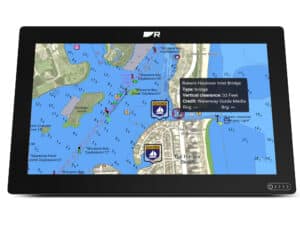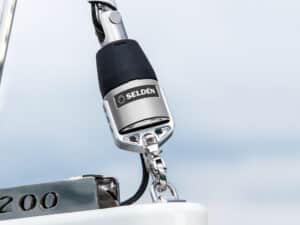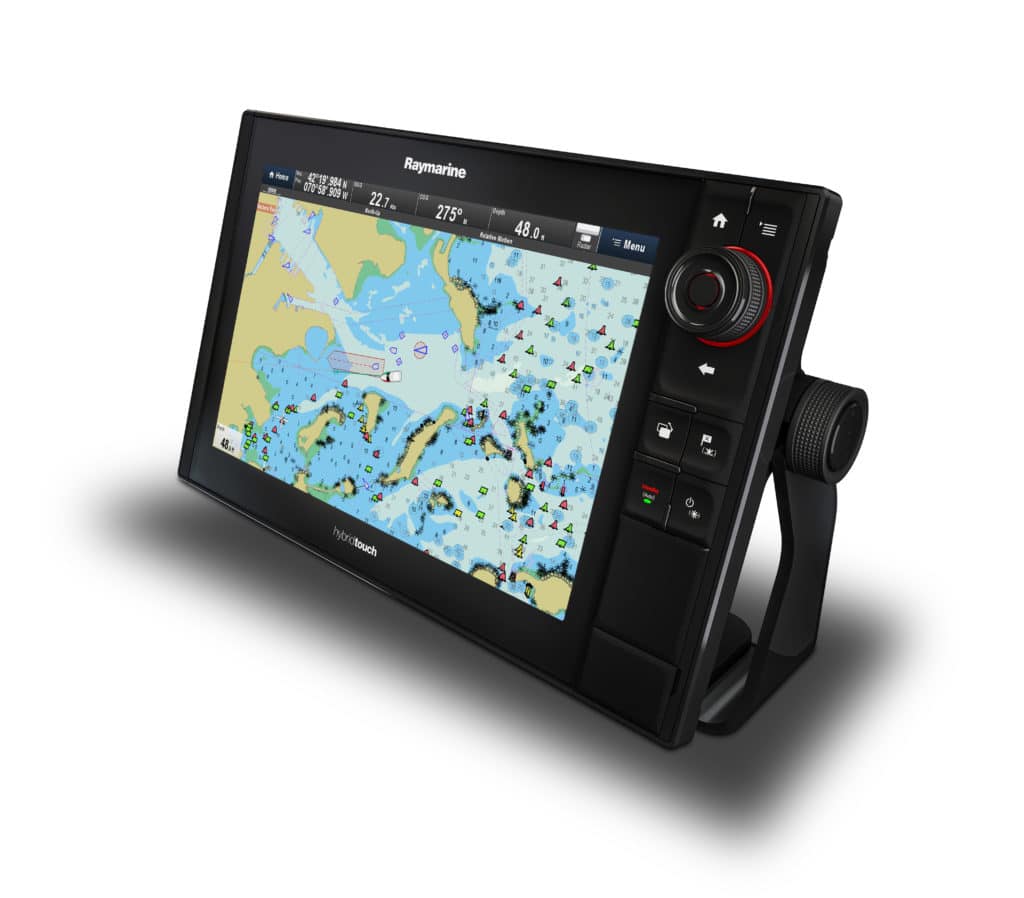
A thin breeze skittered across the Gulf of Maine, and a low cloud ceiling stamped out any moonlight, making for a dark night aboard my dad’s J/44, Southern Cross. My wife and I were standing watch with nothing to look at save a few distant lights. While she enjoys excellent vision, I suffer from severe red-green color blindness, which made it hard to determine whether I was looking at bow and stern lights, multiple vessels, or both. Given that in August of 2006, the Automatic Identification System (AIS) as we know it today wasn’t yet widespread among recreational craft, we spent the next few minutes trying to discern the nature of the scene before consulting the radar, getting on the VHF and waking our captain.
We eventually determined that these lights belonged to two moderate-size commercial fishing vessels anchored close together somewhere off Gloucester, Massachusetts, and that passing well astern would be simple. While this situation illustrates how confusing nighttime navigation can be, AIS technology has since removed the (ugly) word “assumption” from most crossing situations, while also providing significantly better situational awareness. Here’s a look at what’s changed in the decade since that confusing summer night.
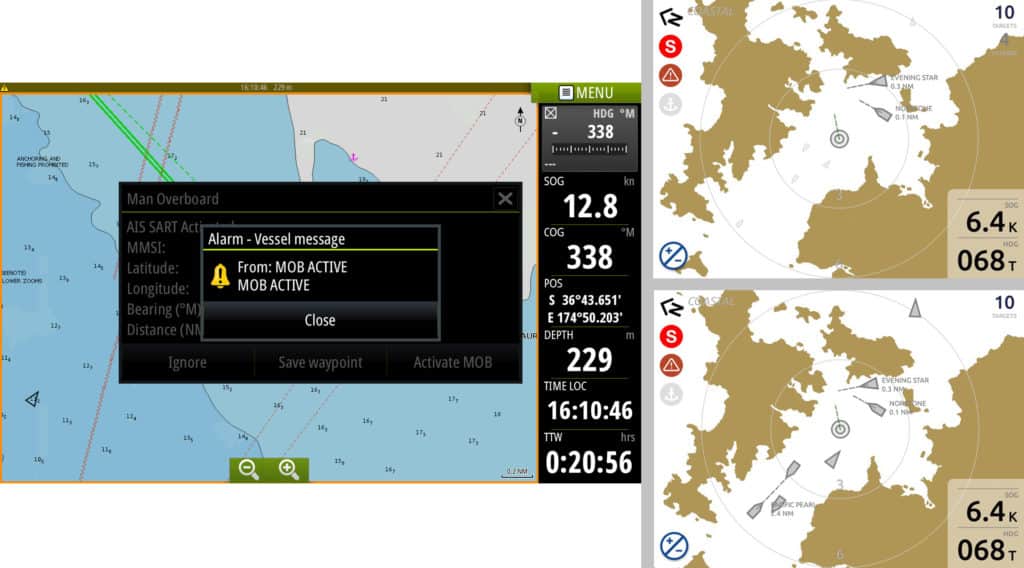
A Look at the Gear
While AIS technology is capable of disseminating a wide range of information, its most common use is to allow mariners to “see” other nearby traffic to avoid vessel-to-vessel collisions. The basic concept is fairly simple: An onboard AIS transponder broadcasts a vessel’s speed, course and location information, derived from the unit’s internal GPS, along with the boat’s unique nine-digit MMSI number, assigned by the FCC. The information is sent out over dedicated VHF channels while the AIS transponder also listens for other vessels’ incoming signals. Properly programmed MMSI numbers allow a mariner to directly call another vessel (think of a cellphone number for your VHF) rather than rely on easily missed VHF broadcasts. In many cases, AIS information can be overlaid onto an electronic nautical chart (or radar display), giving navigators a tremendous level of big-picture awareness, especially when paired with radar imagery.
There are two types of AIS available to mariners: Class A and Class B (see “AIS Carriage Requirements,” below).While some may find the technical details of interest, the biggest differences between these devices are their power, range, transmitting rates, and who uses which unit. Class A AIS is typically used by commercial vessels (or fast-moving recreational boats) and features 12.5 watts of transmitting power. Class A transponders have a variable reporting rate of once every two to 10 seconds, depending on the vessel’s speed. (This rate drops to once every three minutes if the vessel is traveling at less than 3 knots, and once every six minutes when the vessel is anchored.) They are required to have a dedicated display screen, and contemporary Class A units are designed to display both Class A and Class B AIS target information. Critically, Class A units broadcast their transmissions using the Self-Organizing Time-Division Multiple Access (STDMA) scheme, which is an automated method that allows different users to efficiently share finite channel access.
Class B AIS is primarily aimed at the recreational marine market and will eventually be available in two varieties: AIS Class B/SO, which uses the same STDMA scheme as Class A units, and AIS Class B/CS, which uses a Carrier Sense Time Division Multiple Access (CSTDMA) scheme. Unlike the STDMA scheme, which announces the time slots for transmission in advance, the CSTDMA scheme continually monitors a unit’s designated frequencies and selects unused slots. Moreover, Class B/SO units feature 5 watts of transmitting power and a reporting rate of once every five to 30 seconds, depending on vessel speed, while Class B/CS units feature 2 watts of transmitting power and a static reporting rate of once every 30 seconds. Both units reduce their reporting rate to once every three minutes for vessels traveling at less than 2 knots, and once every six minutes when anchored.
Given that most cruising sailboats travel at speeds well below 20 knots (the speed at which reporting rates become germane, as fast boats can outpace their reporting rates when using Class B/CS), most cruisers can safely spec a Class B/CS transponder. (As a side note, while the Coast Guard has approved AIS Class B/SO units, as of this writing, they are not yet commercially available.)
While Class B/SO units are required to have a dedicated display, separate screens are optional for Class B/CS units. Because of this, many AIS manufacturers build black-box Class B/CS units, which can be networked with a vessel’s multifunction display or plotter in order to graphically present a target list atop the cartography. Most Class B units are compatible with NMEA 0183 (and sometimes NMEA 2000) data backbones, making it easy to network them to an MFD.
A third type of Class B AIS allows mariners to listen to incoming AIS transmissions but does not broadcast its own navigational information. These AIS receivers are popular, but it’s vital to remember that while you can use them to see other maritime traffic, that traffic is blind to your position unless the other mariners can see you on their radar or with their eyeballs.
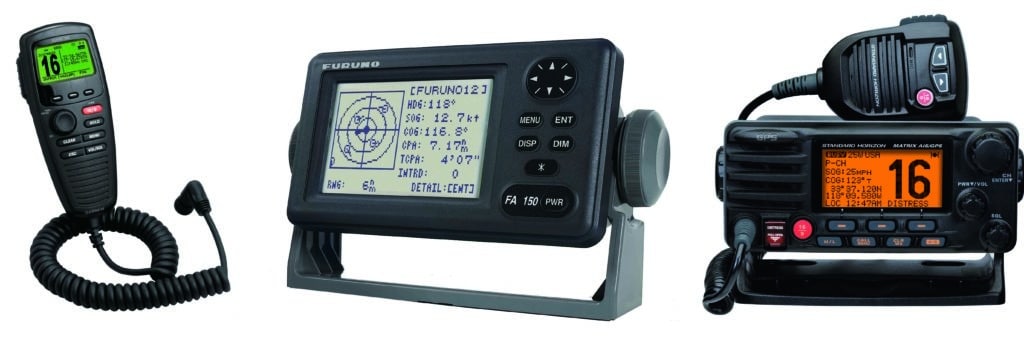
A Versatile Technology
All AIS signals can be “heard” by nearby vessels and aircraft as well as by shore-based facilities such as the Coast Guard’s Nationwide AIS (NAIS) base stations, allowing the Coast Guard to monitor maritime traffic and use AIS as a Vessel Traffic Service tool. Because AIS uses line-of-sight VHF communications, range is typically limited to 10 to 20 miles, with masthead antennas delivering better performance than obstructed antennas; shore-based repeater stations can substantially extend this range. While an AIS unit’s range is limited, it offers better propagation than radar, allowing its signals to “peer around” low-slung islands and making this technology ideally suited to areas rich with geographical features.
While mariners commonly use AIS for collision avoidance, the Coast Guard also employs the technology to mark navigational hazards by broadcasting synthetic Aids to Navigation (AtoNs), which are transmitted by an NAIS station to augment an existing charted buoy or other navigational aid, and virtual AtoNs, which are AIS signals only, used in areas that are difficult to mark with physical buoys or other devices.
The buoys marking Michigan’s Straits of Mackinac are a prime example of synthetic AtoNs, while the approach to San Francisco Bay is marked by virtual AtoNs.
The Coast Guard is also looking at other ways of leveraging AIS, as this technology has the unique ability to deliver updatable messages to a recreational vessel’s MFD or a commercial ship’s Electronic Chart Display & Information System, if the vessels are so equipped.
This vision includes synthetic and virtual AtoNs as well as Application Specific Messages, which can be broadcast over AIS to cordon off specific zones, such as whale-exclusion areas, or to protect maritime traffic from recently sunk vessels. It could also be used to shift shipping channels or augment the “Broadcast Notice to Mariners.” Moving forward, the Coast Guard and NOAA plan to use AIS to share real-time weather observations and geospatial data with mariners.
“AIS is currently the only tool to transfer digital data onto your electronic nautical chart,” says Jorge Arroyo, a Coast Guard program analyst who has been instrumental in writing AIS regulations and standards. He describes an Application Specific Message as the envelope. “Within the envelope, [the Coast Guard] is free to transmit all the other navigation-specific information that we wish. It’s our way of providing digital navigational data directly to the vessel.”
Things are developing in the commercial sector as well. Vesper Marine, a New Zealand-based manufacturer of Wi-Fi-enabled Class B transponders, recently announced its WatchMate Asset Protection service, which allows companies such as those in the oil or gas industries to add virtual AIS beacons to installations like oil rigs or underwater power lines. WatchMate Asset Protection also provides 24/7 asset monitoring and threat detection, and can automatically send AIS text messages to warn of navigational hazards.
Given the amount of navigational information that an AIS unit can provide, adopting this technology is a no-brainer for cruisers, especially as more manufacturers enter the market and prices drop. While it’s tempting to reach for an inexpensive Class B receive-only unit, some cruising rallies and offshore races now require that entrants carry AIS transponders. In any case, the added protection that an AIS transponder offers is well worth the additional cost.
While the “Big Four” electronic manufacturers (B&G, Furuno, Garmin and Raymarine) have offered Class A and Class B AIS units for years, other players in this market include Vesper Marine, which makes a variety of AIS-related products, and Standard Horizon, which embeds AIS technology into its fixed-mount VHF radios. (B&G, Garmin, Icom and Raymarine also build AIS-enabled VHFs.) More recently, ACR Electronics, McMurdo and NKE have entered the AIS market with a range of innovative products that even include man-overboard protection.
As the technology continues to evolve, sailors will certainly find that AIS can do a whole lot more than just shine a light on things that could go bump in the night.
David Schmidt is CW’s electronics editor.



